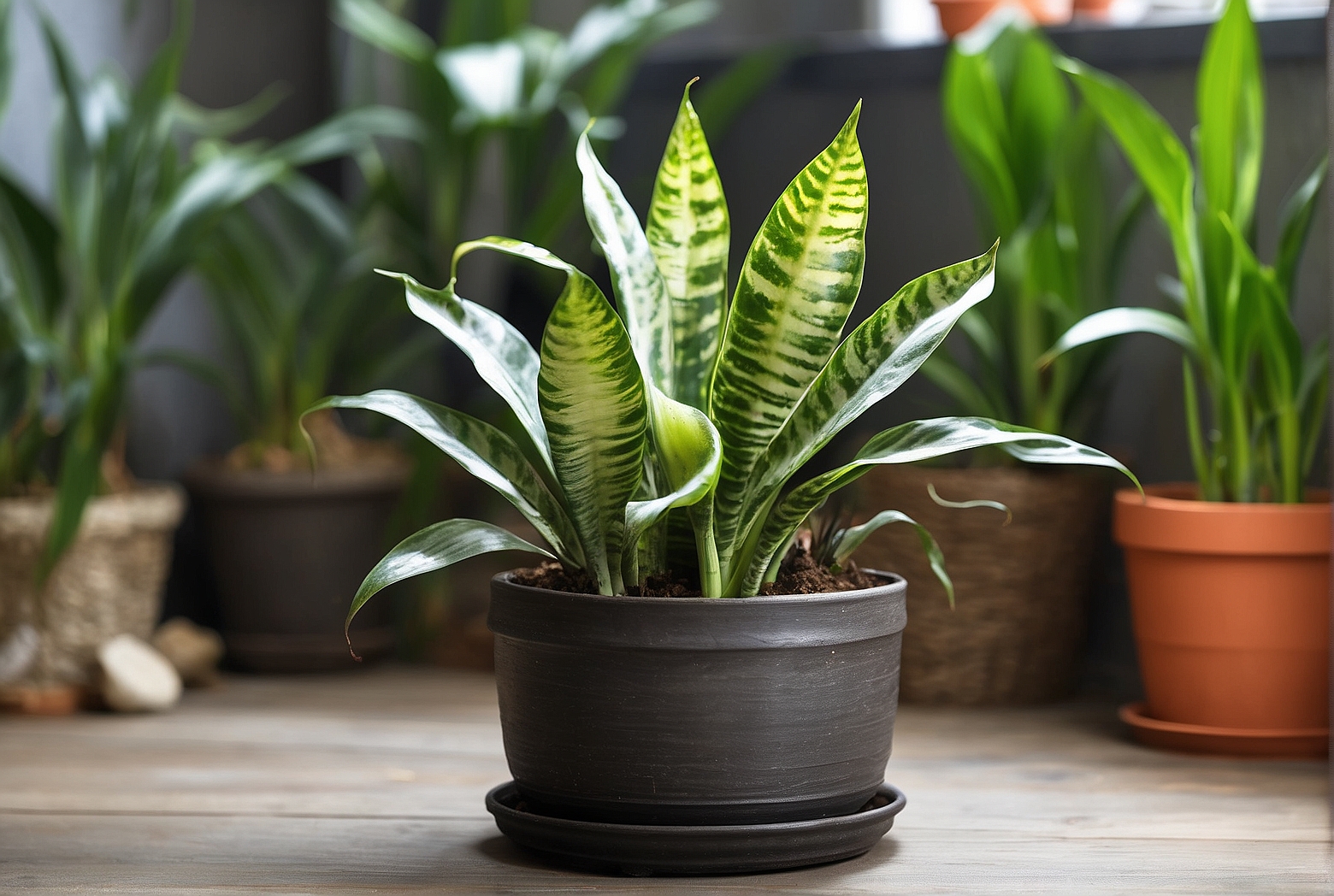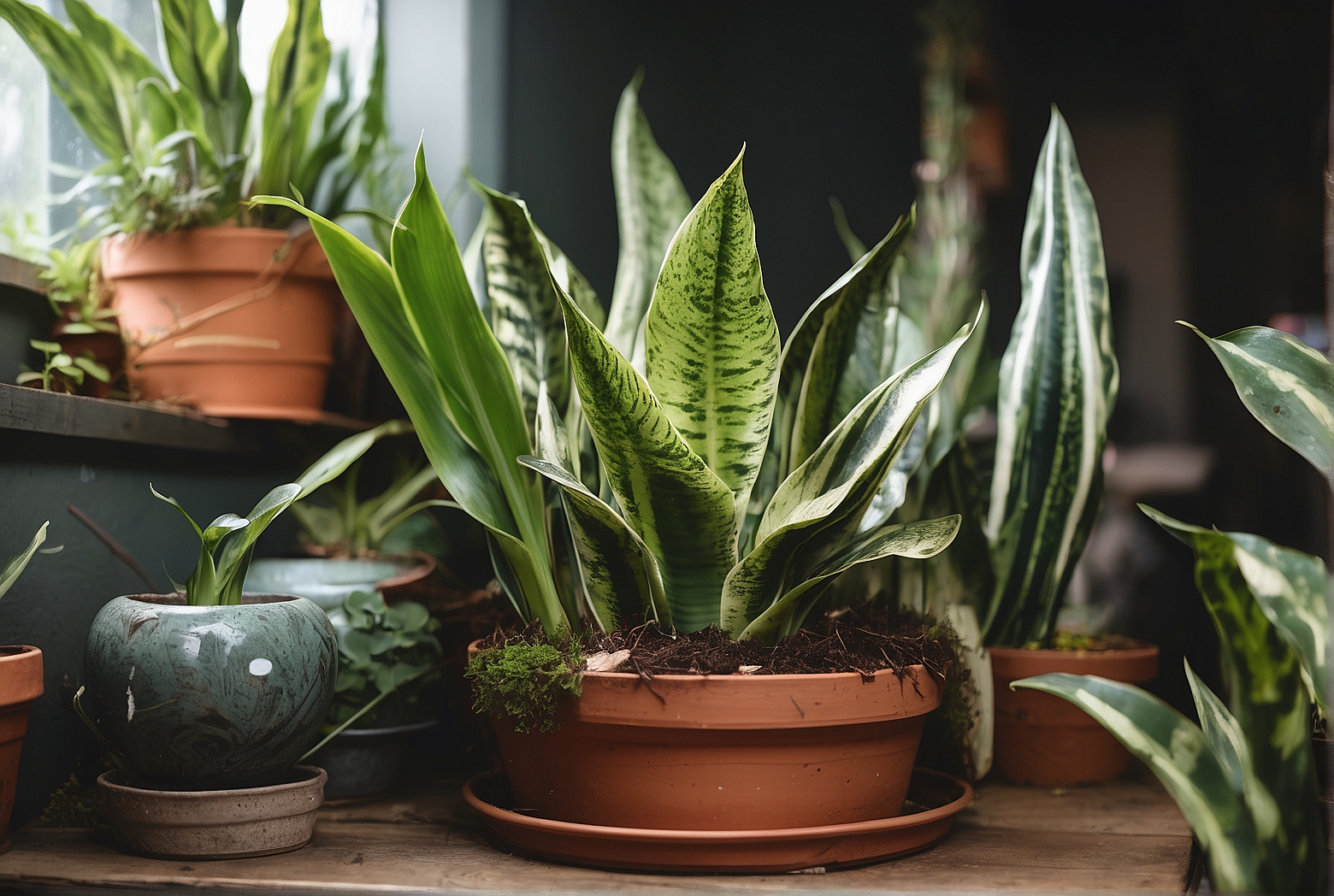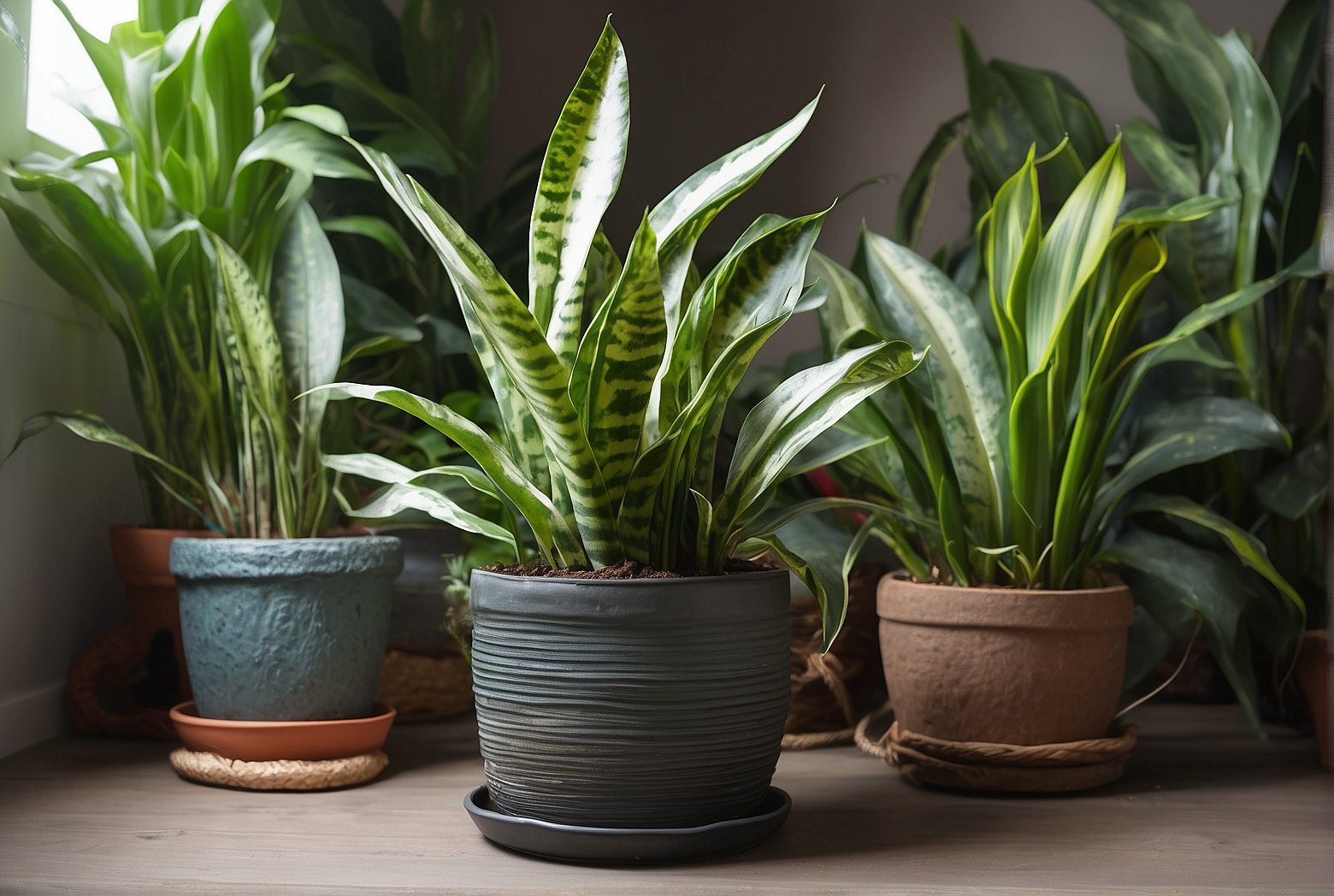Last Updated on April 18, 2024 by Tony Manhart
Have you ever wondered how long snake plants can live? Snake plants, also known as Sansevieria, are popular houseplants known for their striking appearance and low-maintenance nature. But just how long can these resilient plants thrive in your home? In this article, we will explore the lifespan of snake plants and provide you with some valuable tips on how to ensure their longevity. So, get ready to discover the secrets to keeping your snake plant healthy and thriving for years to come!
Lifecycle of Snake Plants
Snake plants, scientifically known as Sansevieria, go through a fascinating lifecycle that encompasses various stages of growth and development, maturation and reproduction, and senescence and dying. Understanding each of these stages can help you take better care of your snake plants and extend their lifespan.
Growth and Development
From the moment you bring a snake plant into your home, it begins its journey of growth and development. Small snake plants typically start as young shoots with only a few leaves. As they receive proper care and attention, they gradually grow and add new leaves to their foliage. These leaves can vary in size and shape, depending on the specific species and variety of snake plant.
During this growth phase, snake plants establish their root systems, which anchor them securely in the soil and enable them to absorb water and nutrients. As the plants continue to develop, they may produce offshoots or “pups,” which are smaller plants that grow alongside the mother plant. These offshoots can be separated and propagated to create new snake plants.

Maturation and Reproduction
Once a snake plant reaches maturity, it has the potential to reproduce and create more plants. Mature snake plants develop flower stalks that emerge from the center of the plant or between the leaves. These flower stalks bear clusters of small, fragrant white or greenish-white flowers, which can be a delightful surprise to witness.
After the flowers have bloomed, snake plants form seed pods, containing the seeds necessary for reproduction. However, it’s important to note that snake plants primarily rely on asexual reproduction through the production of offshoots, as growing these plants from seeds can be a lengthier and more unpredictable process.
Senescence and Dying
Like all living beings, snake plants eventually go through senescence, the natural aging process. As snake plants age, their older leaves may gradually deteriorate and eventually die off. This is a normal occurrence and shouldn’t be a cause for concern. However, it does indicate that the plant is entering a new phase of its lifecycle.
While senescence is a natural part of the plant’s aging process, it’s essential to distinguish between normal leaf shedding and signs of decline or illness. Understanding the factors that can affect a snake plant’s longevity will help you prevent premature death and promote a healthy plant.

Factors Affecting Longevity
The lifespan of a snake plant can be influenced by various factors, including genetic variability, environmental conditions, care and maintenance, and the presence of pests and diseases. Let’s explore each of these factors and how they can impact the lifespan of your snake plants.
Genetic Variability
Different snake plant varieties have varying genetic traits and characteristics, which can affect their lifespan. Some varieties may have natural adaptations that make them more resilient and long-lived, while others may be more susceptible to certain diseases or environmental stressors. When selecting snake plants for your indoor or outdoor spaces, it’s worth considering the genetic background of the specific variety and seeking out reliable sources for healthy plants.
Environmental Conditions
The environmental conditions in which a snake plant is grown play a significant role in determining its lifespan. Snake plants thrive in moderate temperatures and prefer indirect sunlight. Avoid exposing them to extremes of heat or cold, as this can negatively impact their growth and overall health. Additionally, maintaining appropriate humidity levels and providing adequate air circulation are vital to prevent the development of fungal diseases and maintain optimal plant growth.
Care and Maintenance
Proper care and maintenance are essential for extending the lifespan of snake plants. These plants are known for their ability to withstand periods of neglect, but they still require regular care to thrive. Providing the right amount of water, avoiding overwatering, and ensuring proper drainage are key aspects of snake plant care. It’s crucial to strike a balance between providing enough water for the plant’s needs without allowing it to sit in waterlogged soil, as this can lead to root rot and ultimately compromise the plant’s longevity.
Pests and Diseases
Just like any other houseplant, snake plants can be susceptible to pests and diseases that can impact their lifespan. Common pests that may affect snake plants include spider mites, mealybugs, and scale insects. Regular inspection and early detection of these pests can allow for prompt treatment and prevent them from causing extensive damage to the plant.
In addition to pests, snake plants can also be prone to fungal diseases such as root rot and leaf spot. These diseases often develop as a result of overwatering, poor air circulation, or excessively humid conditions. Maintaining good hygiene, avoiding overwatering, and providing adequate air circulation can help prevent the onset of diseases and ensure the longevity of your snake plants.
Average Lifespan of Snake Plants
The average lifespan of snake plants can vary depending on whether they are grown indoors or outdoors. Let’s explore the typical lifespan expectations for snake plants in both settings.
Indoor Snake Plants
When properly cared for, snake plants grown indoors can thrive for many years. On average, an indoor snake plant can live for approximately 10-12 years. However, with the right conditions and care, some snake plants have been known to live well beyond 20 years.
Outdoor Snake Plants
Snake plants that are grown outdoors can have a slightly shorter lifespan than their indoor counterparts. Outdoor conditions, including exposure to weather elements and potential pests and diseases, can have an impact on the plant’s longevity. On average, outdoor snake plants live for about 8-10 years. However, with appropriate care and protection from extreme conditions, outdoor snake plants can also surpass the 10-year mark.
Indoor Snake Plants
Growing snake plants indoors allows you to enjoy their beauty and benefits as houseplants. Here are some important considerations specifically related to indoor snake plants:
Growth and Lifespan Expectations
Indoor snake plants tend to have slower growth compared to those grown outdoors. This slower growth rate contributes to their longevity, as they are less prone to becoming overgrown and can maintain their compact, attractive appearance for a more extended period. With proper care, indoor snake plants can reach their maximum lifespan potential.
Tips for Indoor Longevity
To promote the longevity of indoor snake plants, it’s important to consider several factors:
- Lighting: Snake plants are known for their ability to tolerate low-light conditions, but providing adequate lighting can enhance their growth and overall health. Place your snake plant in a location that receives bright, indirect light. Avoid exposing it to direct sunlight, as this can scorch the leaves.
- Watering Techniques: Overwatering is one of the most common causes of snake plant decline. To prevent root rot, allow the soil to dry out between waterings. Checking the moisture level by sticking your finger about an inch into the soil can help determine when it’s time to water again.
- Soil and Drainage: Snake plants prefer well-draining soil to prevent waterlogging. Use a potting mix specifically designed for succulents or mix regular potting soil with perlite or sand for better drainage. Ensure the pot has drainage holes to prevent excess water retention.
Repotting and Division
Repotting snake plants should be done every 2-3 years, or when the plant has outgrown its current container. Choose a pot that is slightly larger than the current one, as snake plants prefer somewhat tight spaces. When repotting, carefully remove the plant from its current pot and gently tease apart any crowded roots. Repot each division into its own container, and water the plants sparingly for the first few weeks to prevent overwatering.
Outdoor Snake Plants
Growing snake plants outdoors can be a rewarding experience, as they can complement your garden or landscape with their unique foliage. Here are some key considerations when growing snake plants in outdoor settings:
Weather Tolerance
Outdoor snake plants exhibit excellent tolerance to a wide range of weather conditions. They are well-suited for warm climates but can also withstand colder temperatures, as long as they are not exposed to frost. In regions with extended freezing temperatures, it’s advisable to bring outdoor snake plants indoors or protect them with frost covers during the winter months.
Survival in Different Climates
Snake plants are native to regions with tropical and subtropical climates, and they are most commonly grown as houseplants in other parts of the world. However, in suitable outdoor environments, such as USDA hardiness zones 9 to 11, they can thrive and continue to grow for many years.
Protection from Extreme Conditions
While snake plants have a remarkable ability to withstand various environmental conditions, severe weather events can still pose a threat to their longevity. Excessive rainfall, high winds, or prolonged exposure to extreme temperatures can potentially harm the plants. To protect outdoor snake plants from these conditions, consider providing shelter or moving them to a more protected location during periods of inclement weather.
Promoting Longevity
To ensure your snake plant thrives and enjoys a long-lasting life, it’s essential to provide optimal care and create a suitable environment. Here are some tips for promoting the longevity of your snake plants:
Choosing the Right Variety
Selecting a snake plant variety that is well-suited to your specific climate and growing conditions is essential. Some varieties, such as Sansevieria trifasciata ‘Laurentii’ or Sansevieria trifasciata ‘Golden Hahnii,’ are particularly known for their resilience and longevity.
Providing Adequate Lighting
While snake plants can tolerate low-light conditions, they still benefit from receiving bright, indirect light. Place your indoor snake plants near a north or east-facing window to ensure they receive the necessary amount of light for optimal growth. If grown outdoors, position the plants in an area with partial shade to protect them from direct sunlight.
Appropriate Watering Techniques
Overwatering is one of the most common mistakes made with snake plants. These plants are drought-tolerant and can survive long periods without water. It’s crucial to allow the soil to dry out between waterings to prevent root rot. Remember, it’s better to underwater than overwater a snake plant.
Proper Soil and Drainage
Snake plants thrive in well-draining soil that allows excess water to escape easily. A mixture of regular potting soil and perlite or sand can create an excellent growing medium for snake plants. Ensure the pots have drainage holes to prevent water from accumulating at the bottom.
Fertilization and Nutrient Supply
Snake plants generally require minimal fertilization to thrive. A balanced, slow-release fertilizer applied annually during the growing season can help provide essential nutrients. Make sure to dilute the fertilizer according to package instructions to avoid over-fertilization, which can harm the plant.
Preventing Pests and Diseases
Regularly inspecting your snake plants for signs of pests and diseases is crucial to catch any issues quickly. As mentioned earlier, common pests that may affect snake plants include spider mites, mealybugs, and scale insects. If you notice any signs of infestation, promptly treat the affected plants with appropriate pest control measures. Maintaining good hygiene and providing proper air circulation can help prevent fungal diseases.
Signs of Aging and Decline
As snake plants age, they may exhibit certain signs of decline that indicate their natural aging process. Recognizing these signs is essential for prompt action and preventing further deterioration. Here are some common signs to watch out for:
Yellowing or Browning Leaves
Yellowing or browning leaves can be a natural part of a snake plant’s lifecycle. As individual leaves age, they may gradually lose their vibrant green color and develop yellowish or brownish hues. However, if this discoloration occurs rapidly or affects a large number of leaves, it may indicate a problem with watering, light, or disease.
Stunted Growth
Slowing growth or stunted development can be a sign of unfavorable environmental conditions, nutrient deficiencies, or root-bound plants. Addressing these issues promptly can help maintain the vigor and longevity of your snake plants.
Root Rot
Root rot is a common problem that affects snake plants when they are overwatered or when the soil doesn’t provide adequate drainage. Symptoms of root rot include foul smell, mushy roots, and discolored, wilting leaves. If left untreated, root rot can lead to the decline and eventual death of the plant.
Pests and Diseases
The presence of pests or the development of fungal diseases can significantly impact the health and lifespan of snake plants. Watch out for signs such as webbing, sticky residue, or the appearance of tiny insects on the leaves. Similarly, dark spots, lesions, or wilting foliage may indicate the presence of diseases. Early detection and appropriate treatment are vital for preventing the spread of pests and diseases.
Reviving Wilting or Dying Snake Plants
If you notice your snake plant wilting or showing signs of decline, it’s essential to identify the underlying issue and take corrective measures to revive it. Here’s a step-by-step approach to reviving wilting or dying snake plants:
Identifying the Problem
Carefully examine the plant and consider various factors that may contribute to its decline. Assess lighting conditions, watering practices, potential pests or diseases, and soil conditions, among other factors. Identifying the specific problem allows you to determine the appropriate course of action.
Corrective Measures
Once you have identified the issue, take the necessary corrective measures. This may involve adjusting the plant’s lighting conditions, improving watering practices, repotting the plant in well-draining soil, treating pests or diseases with appropriate methods or products, and providing an optimal environment to promote recovery. Patience and consistent care are essential during this process, as it may take some time for the plant to rebound.
Propagation and Continuity
To ensure the continuity of snake plants and expand your collection, propagation can be an exciting endeavor. Snake plants can be propagated through both asexual reproduction and growing them from seeds.
Asexual Reproduction
Asexual reproduction is the most common and straightforward method of propagating snake plants. This involves separating the offshoots or “pups” that develop alongside the mother plant. Carefully remove the offshoots from the mother plant’s base, ensuring each division has its own set of roots. Pot these divisions in well-draining soil, water sparingly, and provide the same care as you would for a mature snake plant.
Growing Snake Plants from Seeds
Growing snake plants from seeds is less commonly practiced due to the relatively longer timeline and less predictable outcomes. If you choose to grow snake plants from seeds, it’s important to ensure the seeds are fresh and viable. Sow the seeds in a well-draining potting mix, keeping them moist and warm. Germination can take several weeks or even months, so patience is essential throughout the process.
Conclusion
Snake plants, with their intriguing lifecycle and unique adaptability, offer long-lasting beauty and benefits. By understanding the stages of growth and development, as well as the factors that affect longevity, you can provide optimal care to ensure your snake plants thrive for years to come. Whether you choose to grow them indoors or outdoors, snake plants can bring joy and a touch of nature to your living spaces, contributing to a healthier and more aesthetically pleasing environment. Enjoy the process of nurturing and appreciating the duration of snake plant lifespan and reap the rewards they offer.
Tony Manhart is a passionate gardener who has been tending to gardens for over 20 years. He takes pride in creating beautiful outdoor spaces with plants, trees, and shrubs that can thrive in any environment. He loves to share his knowledge with others and has taught classes on gardening basics and advanced techniques. He is committed to sustainability, using natural and organic methods to create and maintain gardens. He also works with local organizations to create green spaces for communities. When he’s not gardening, Tony enjoys hiking, reading, and spending time with his family.


